10/15/2015
A History of product placement in movies: 150 cases from 1911 to today
In movies, a product placement consists in introducing visually or verbally a brand or a product. This technique, sometimes qualified as undercover marketing is often used since the 70’s for multiple reasons. The viewer’s attention is maximum during the movie, he doesn’t sense the message as advertising since it cleverly fits with the scenario. The impact is durable (DVD, TV broadcast…) and relies strongly on the movie’s success. Product placements are also indispensables as movies reflect the real world, showing brands and well known products is crucial for the story’s credibility. All product placements don’t have the same impact on the scenario. The following examples will thus be divided into 8 categories.
On the menu:
- Simple presence on the screen
- Interaction product/actor
- When the product becomes the actor
- The product placement is on the poster!
- The benefits of the product are shown
- The product is customised for the movie (product-like)
- Misusing the product
- When product placements parody product placements
- Bonus sequences
1. Simple presence on the screen
Probably the most discrete product placement in movies as nobody interacts with the product. These are very frequent on street scenes (car brands) and supermarket scenes. A few extraordinary cases:
The Garage (1919)


Let’s first start with the prehistory of cinema. Product placements are indeed as old as cinema itself. The Garage is a short 25 minutes comedy starring Buster Keaton and Roscoe Arbuckle. A succession of burlesque scenes takes place in the so called Garage. In several sequences shots, we can see a sign for ZEROLENE oils as well as the Red Crown Gasoline logo, gaz station in the early 1900’s. This product placement was criticized at the time by the newspaper Harisson’s Report.
The Day Earth Stood Still (1951)
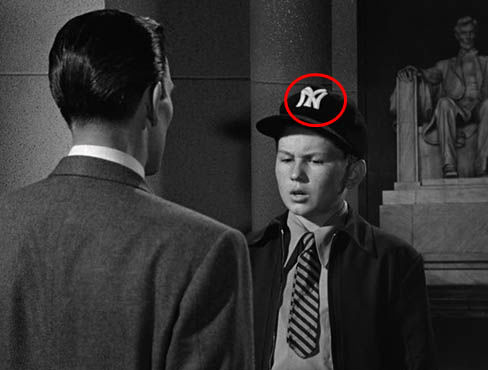
Let’s now move some 30 years forward to stop a moment on The Day Earth Stood Still, classic of the 50’s science fiction genre. A pacifist alien lands on Earth with an human appearance and tries to gather presidents of every country to deliver an universal peace message. The boy, Bobby, wears the famous NY cap from the New York baseball team. A 5 minutes static shot speach is held between Bobby and the alien in front of the Lincoln Memorial. The brand gets thus a good visibility. In an inconscious way, we have 2 characters, Abraham Lincoln and Bobby, standing for 2 major american cities, New York and Washington, opposed to the alien.
The Shining (1980)
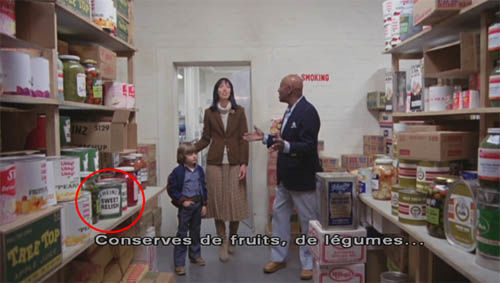
Let’s move now to a classic Stanley Kubrick movie, a film director that did not leave much things to chance. The Shining is an horror movie where the tension comes from the slowness of the action, wide and clear sequences shot, unusual for the genre. A writer and his family are settling in an isolated hotel for monitoring purposes during the winter season. Before leaving the hotel, an employee gives them a grand tour of the house, and particularely the pantry. Heinz cans are clearly orientated toward the camera.


Later on, after isolation “made Jack a dull boy”, his wife had no choice but to lock him in the pantry. Most food supplies have changed, but a new Heinz can is still in the foreground!
Ed TV (1999)
Ed is an ordinary guy, that accepts to be filmed 24/24 for a reality show, until the project starts compromising with his love relationship. In a moment of blues, as he wants to stop it all, the camera focuses on a bus, and particularly on the Energizer banner, and its famous pink Rabbit, that lasts longer. In a certain way, Ed embodies this pink rabbit, since he can’t stop his contract.
2. Interaction product/actor
The product placement is already more memorable.
Wings (1927)
Let’s go back again to the prehistory of cinema for a product placement as naive as movies of these days. Wings features two young men, in love with the same girl, forced to become fighter pilots during WW1. The camera akwardly focuses on the Hershley’s chocolate bar the pilot is eating. No doubt the brand paid to appear!
It’s a wonderful life (1946)
George Bailey renonced to his child’s dream of becoming an explorer to take over his father’s bank. An angel shows his him life as it could have been if he had made other choices. We see young Georges showing a newspaper to a friend, the National Geographic Magazine. We can also see Coca-Cola in the background. In view of the narrator’s age, this scene is taking place in the 20’s. The two brands already existed at this time.
A Clockwork Orange (1970)
Alex’s parents discover their son’s release by reading the Daily Telegraph, the Daily Mirror and the Daily Mail. Good vision of the future as these newspapers still exist!
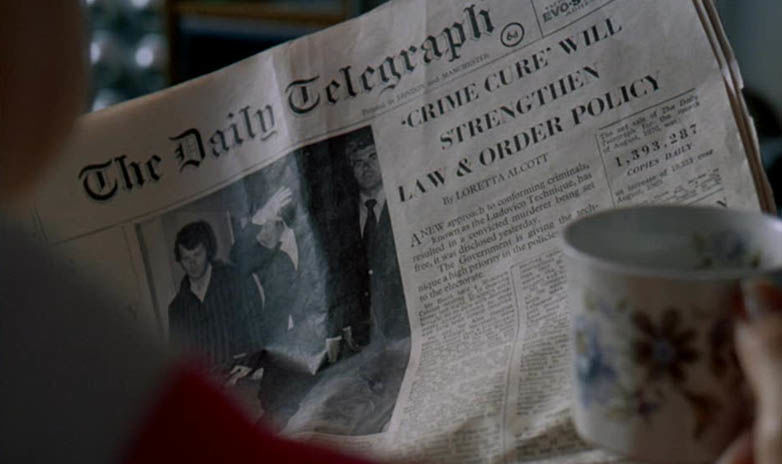
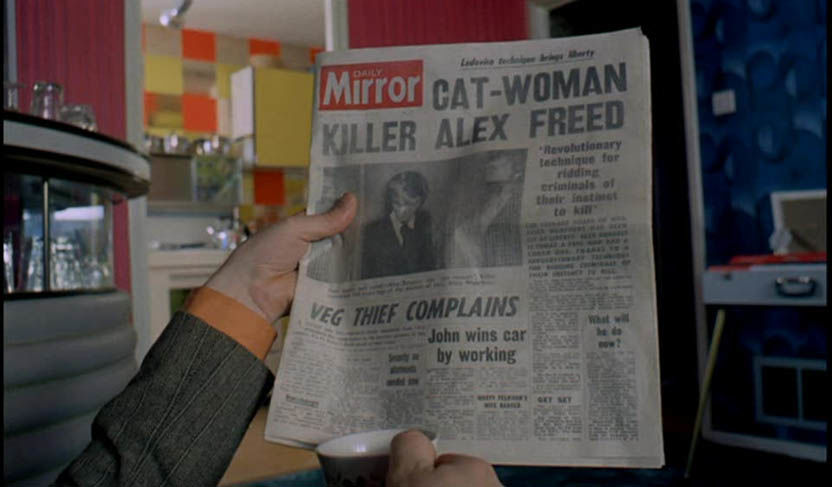

The Game of Death (1978)
5 years after Bruce Lee’s death, this clumsy movie was released, and became cult thanks to the famous battle sequence between our hero and the basketball player Kareem Abdul Jabbar. Bruce Lee is wearing Yellow Adidas with 3 stripes, perfectly matching with the rest of his clothes.
Superman 2 (1980)
We are touching here a sensitive issue: tobacco advertising. Forbidden in many countries, it needs to use some tricks to exist. Unfortunately for Marlboro, it’s too obvious here! This product placement is so bad that it became a classic. Indeed, such Marlboro trucks never existed, it also looks that Superman fights in a giant cigarette pack. It would have been more judicious for Superman to crash into a real truck.
The Shining (1980)

The isolation (and maybe the indian cimetery under the hotel’s foundations) is driving the writer mad. In his delirium, an imaginary waiter is serving him a Jack Daniels. The bottle seems to be the only real thing in his parallel universe.
E.T. (1982)
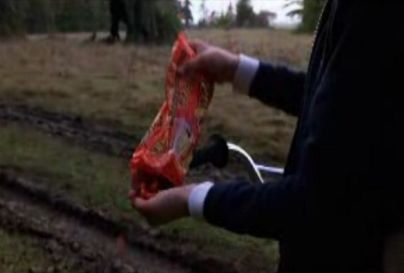
A new classic of product placements. Elliott is sowing Reese’s Pieces to attract the E.T., who loves it. The Reese’s Pieces brand who was launched 2 years before in USA increased its sells by 65% three months after the movie’s release! Note that the original scenario planned to use M&M’s, but the brand declined the offer. Unfortunately Reese’s Pieces didn’t manage to sustain this notoriety and is still far away from M&M’s today.
Forrest Gump (1994)

As you will see all along this article, Tom Hanks is familiar with memorable product placements. Forrest has no brain, but can run faster and longer. It was obvious that someone would pay him a pair of Nike at some point!
Men in Black (1997)
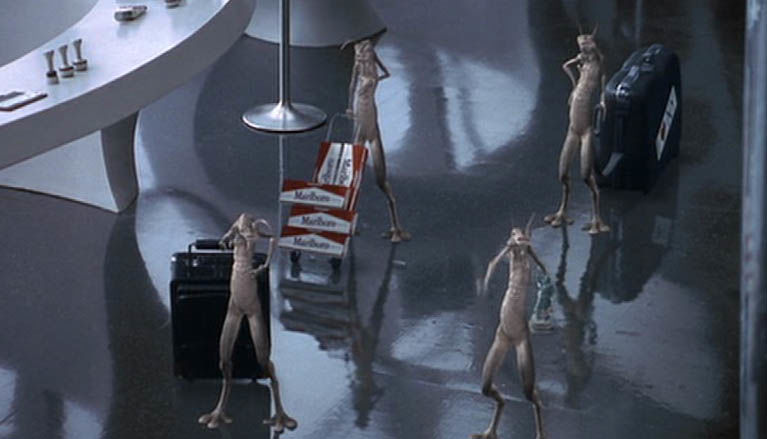
Marlboro is back in a science fiction movies! This time, the brand fits better with the scenario. Aliens are leaving Earth under an intergalactic threat. One of them is carrying cartons of Marlboro, just like the ones you can buy in Duty-free shops.
The Matrix (1999)

One of the famous shots from the movie, where Morpheus compares the human being to a (Duracell) battery.
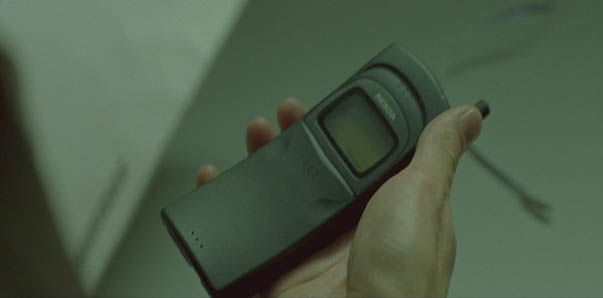
Neo receives a mobile that starts ringing immediately. Morpheus is on the line. The (vintage today) mobile is the last Nokia.
Mission to Mars (2000)
The ideal woman’s DNA is a succession of M&M’s.
WALL-E (2007)
 Wall-E has a Rubick’s cube and an Ipod in his house. This video proves that the iPod will still work in the year 2700! Also, don’t you think that Eve looks like an Apple product? Should we see an insidious manipulation from Apple? For if Eve is a mac, no doubt Wall-E is an old rusty and outdated PC. Eve is eco-responsible. She was built to find the last plant on Earth, and can solve the Rubick’s cube within a few seconds!
Wall-E has a Rubick’s cube and an Ipod in his house. This video proves that the iPod will still work in the year 2700! Also, don’t you think that Eve looks like an Apple product? Should we see an insidious manipulation from Apple? For if Eve is a mac, no doubt Wall-E is an old rusty and outdated PC. Eve is eco-responsible. She was built to find the last plant on Earth, and can solve the Rubick’s cube within a few seconds!
The Pursuit of Happyness (2007)

Let’s stay with the famous Rubick’s cube. Will Smith is a smart single dad, ready for everything to become a Wall Street trader in the 80’s. Also ready to impress a headhunter by solving the Rubick’s cube, very popular game in the 80’s.
The Dark Knight (2008)
The batmobile is a Lamborghini Murcielago, which means bat in spanish!
Source code (2011)

In the virtual reality, we are all using Bing rather than Google!
3. When the product becomes the actor
The product takes an important place in the scenario and is inseparable from the movie.
Goldfinger (1964)
How is it possible to talk about product placement without mentioning James Bond? Every new movie is stuffed with product placements, more or less integrated with the scenario. If we had to only choose one, it would definitely be the famous Aston Martin 007 is driving in Goldfinger and some other productions. The car perfectly fits with the James Bond spirit: british, distinguished, powerful. Her numerous gadjets contributed to build her legend. In 1995, BMW signs a three movies deal for 75 millions dollars to have James Bond driving their cars. We’ll see 007 driving a BMW Z3 in GoldenEye, a 750li in Tomorrow Never Dies and a Z8 in The World Is Not Enough. James Bond driving a german, shocking!
Honey, I Shrunk the Kids (1989)

The father is about to eat his son, floating in the middle of a Cheerio. You’ll be more careful in front of your Cheerios now.
Back to the future III (1989)
Don’t worry, we’ll talk about the DeLorean a bit further! Let’s enjoy for now this Nike anachronism (40′).
Ed TV (1999)
Ed’s girlfriend works at UPS, but it’s also about FedEx here…
Cast Away (2000)
This time, FedEx is the hero. The brand is all over the place as Tom Hanks’ character works there.
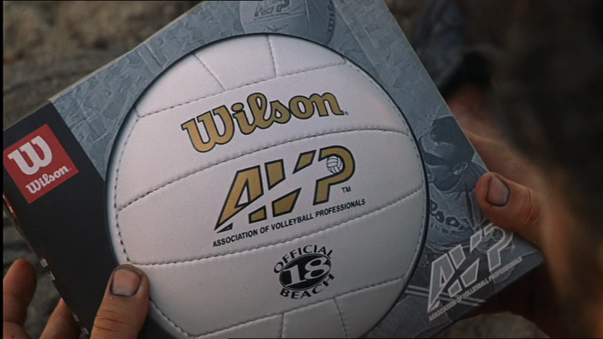
Feeling lonely, our hero starts talking to his new best friend, Wilson.
I, Robot (2004)
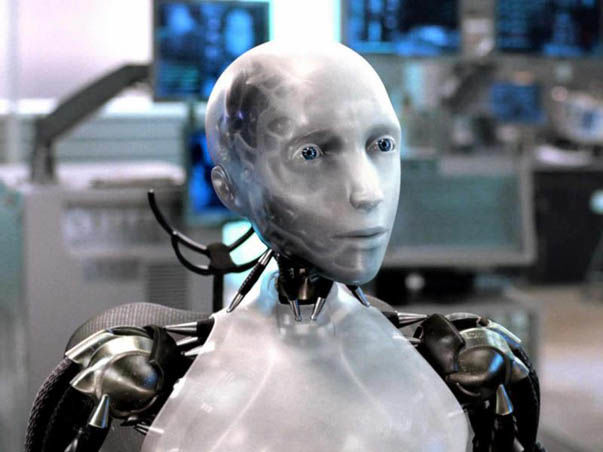
In a future where robots will rebel against humanity, the good robot with human consciousness is named Sonny…
4. The product placement is on the poster!
The summum of product placement. Posters of the movies also become printed advertising for the product.
The Love Bug (1968)

The Beetle is the litteraly the heroin of the saga. The car’s choice wasn’t obvious before producing the film. The Beetle was competing with Toyota, Volvo and MG. Let’s note that the Volkswagen logo doesn’t appear on the first movie as Volkswagen didn’t give the permission…
Risky Business (1983)
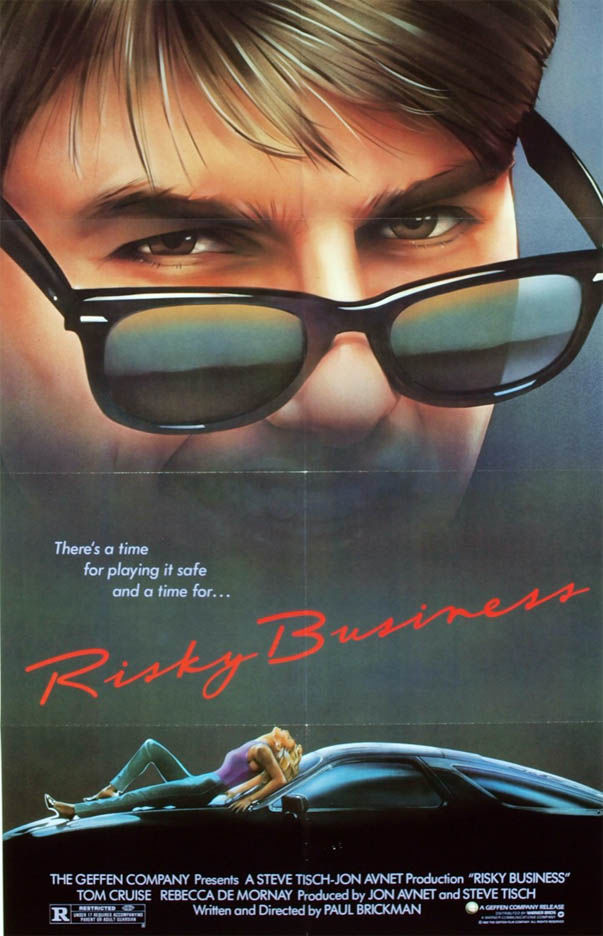
Connoisseurs will recognize Tom Cruise’s Ray-Ban Wayfarer, even without the logo on the right glass.
Back to the future (1985)
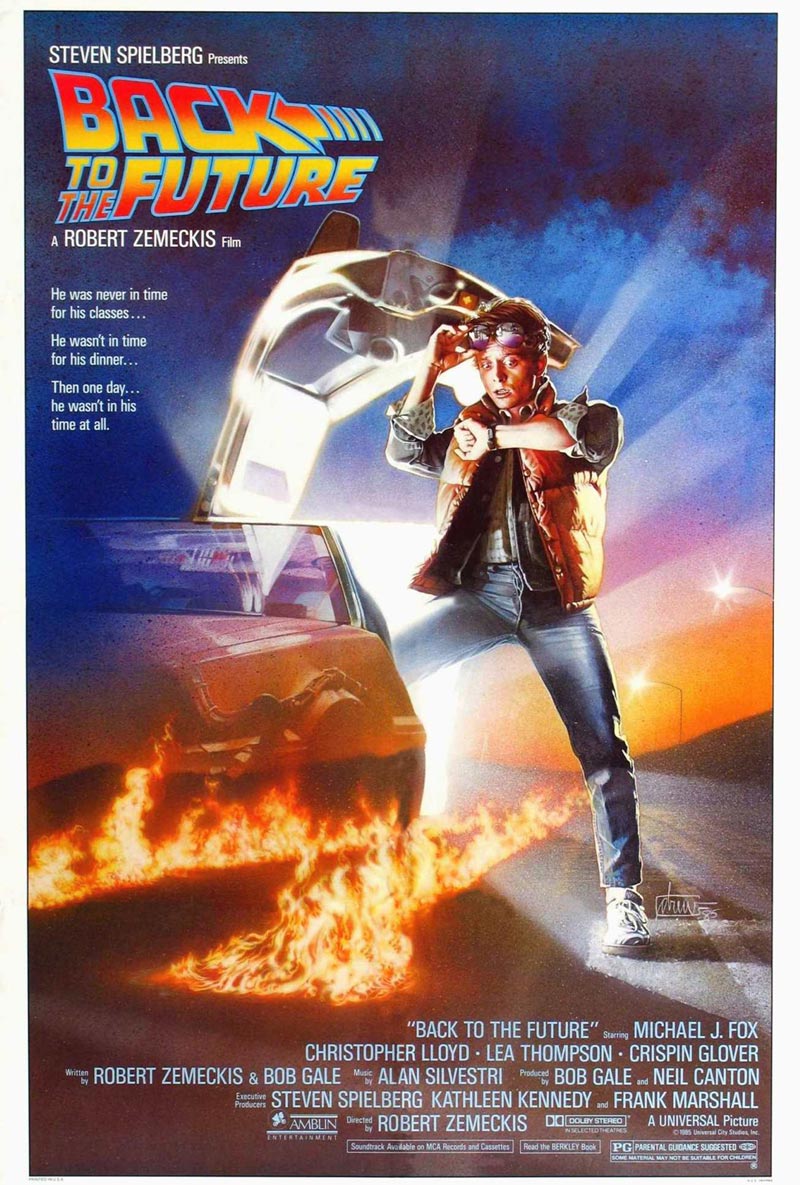
Back to the future and Delorean are undeniably connected one to the other. 9000 cars were produced between 1981 and 1983. This rare car became a myth. Initially, the time machine was supposed to be a fridge. Fortunatly, the scenarists changed their mind as the time machine was supposed to be mobile. The car had to be a sports car to reach 88 miles/h. The choice of the Delorean became obvious as the car had to be confused with a spaceship in a scene.
Reservoir Dogs (1992)
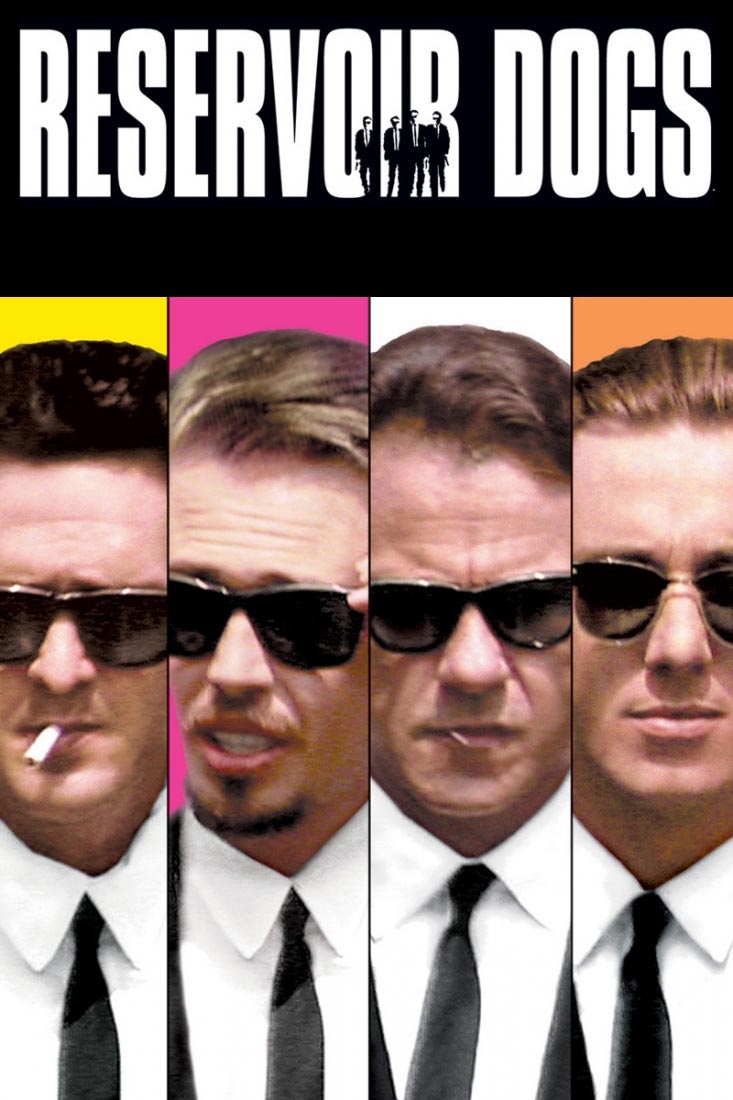
Ray-Ban is once again on a movie’s poster! Each character has his own model.
Men in Black (1997)

And again! Ray-Ban Predator is the top seller of 1997.
Kill Bill (2003)
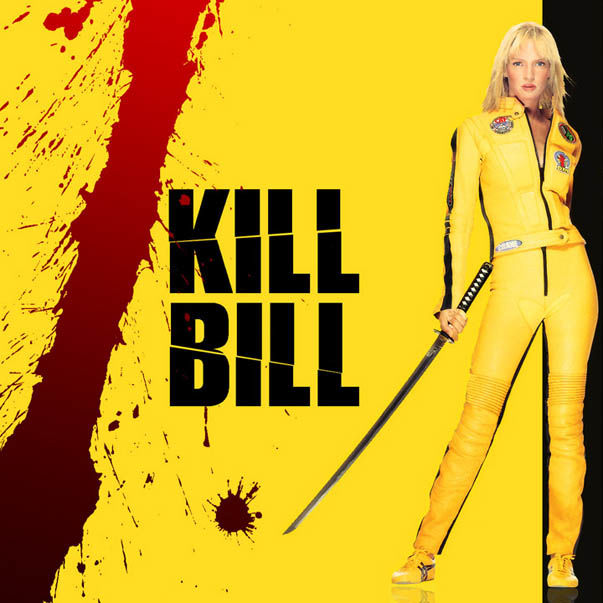
Have a good look at Uma Thurman’s shoes. They are the Asics Onitsuka Tiger. Note that these clothes are an tribute to Bruce Lee’s Game of Death, who was wearing… Adidas!
Ray (2004)

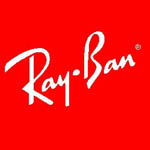 You know the music now. This font is Ray-Ban’s font!
You know the music now. This font is Ray-Ban’s font!
The Devil wears Prada (2005)

The movie adaptation of the eponymous novel. Product placements are not reseved to movies!
Gran Torino (2008)
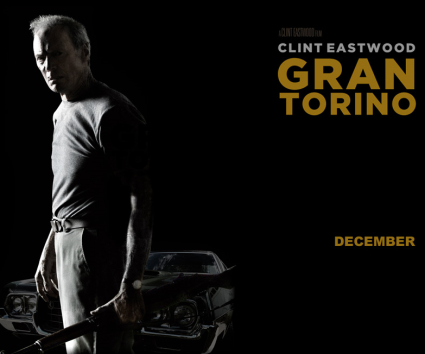
The car is the title of the movie!
The Social Network (2010)
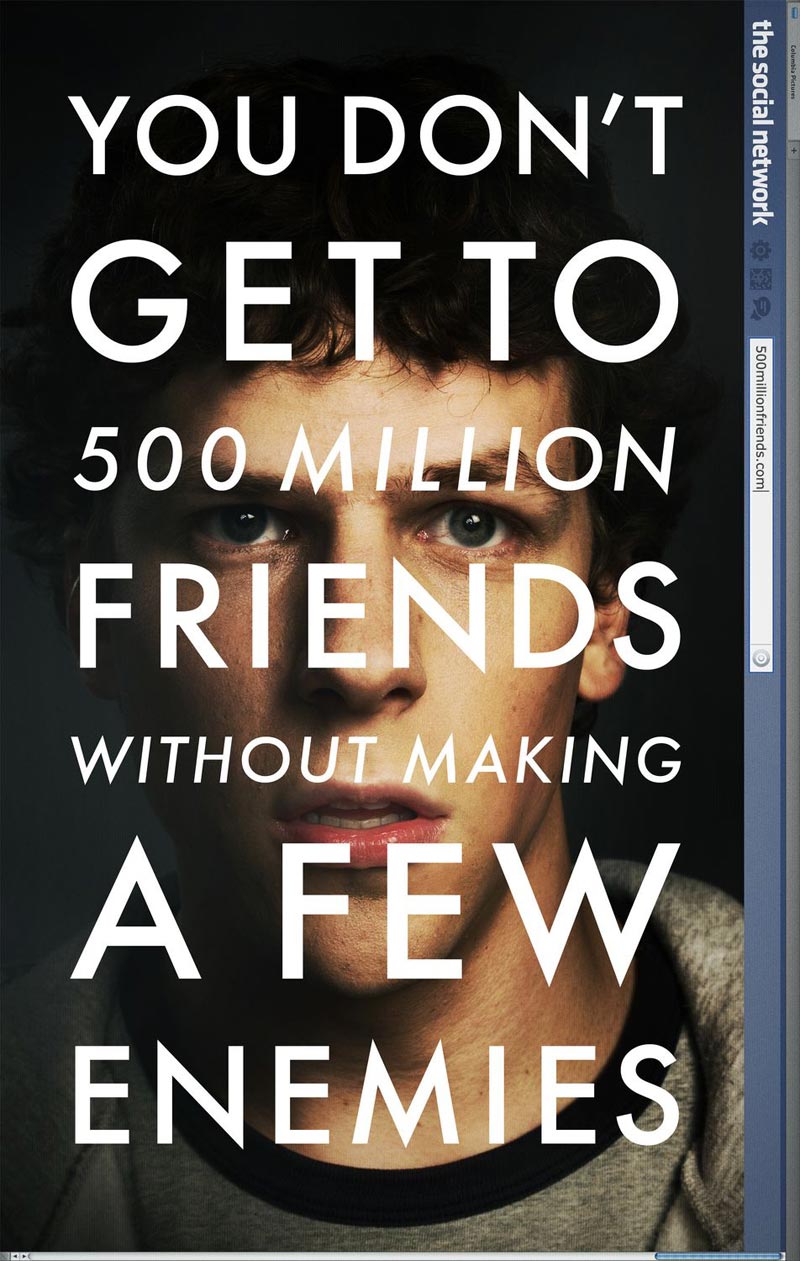
Facebook’s genesis is at the center of the scenario. 1 512 310 Likes
5. The benefits of the product are shown
Real advertising sequence during the movie, where the benefits of the product are explicitly shown.
Last Action Hero (1993)
Last Action Hero and the cinematic “mise en abyme”! We have a pretty paradox with our hero, conscious of his fictive existence and vulnerability. This scene is the perfect illustration. Schwarzy knows his vulnerability whereas the bad guy doesn’t. He also know that his Mercury Sable 1989 has an airbag… Muscle and brain!
American beauty (2000)
The husband has recently disconnected from his previous life to enjoy every moment he lives. So he changed his old Chevrolet for “the car of his dreams”, a Pontiac Firebird 1970. Pontiac is clearly seen as the symbol of freedom.
6. The product is customised for the movie (product-like)
We find in this category a lot of futuristic movies. Brands can thereby enter our vision of the future, and tell us they will still be there. They can also take this opportunity to test new products, designs and survey our reactions.
A Clockwork Orange (1970)
Alex and his “droogies” are driving an Adam Probe 1970, adapted for the movie and renamed Durango 95.
Back to the future II (1989)
Autotying Nikes. A past vision of the future… Remember, the action is supposed to take place in 2015!
Last Action Hero (1993)
Danny tries to prove John Slater that he is Arnold Schwarzenegger. So he takes him to a videostore to show him Terminator II. Unfortunately in this pseudo-reality, Sylvester Stallone is the Terminator, the other 80’s and 90’s action movie star!
Romeo + Juliette (1996)
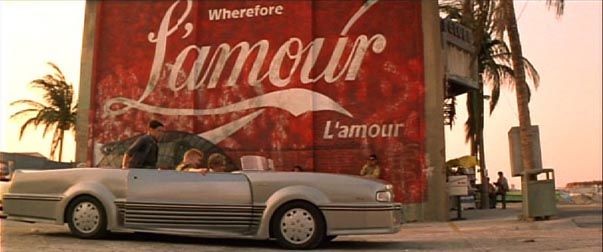
The love of Coca-Cola!
Minority Report (2003)
All the product placements largely contributed to finance the movie. The approach of the future’s advertising where ads talk to you, is very realistic.
I, Robot (2004)
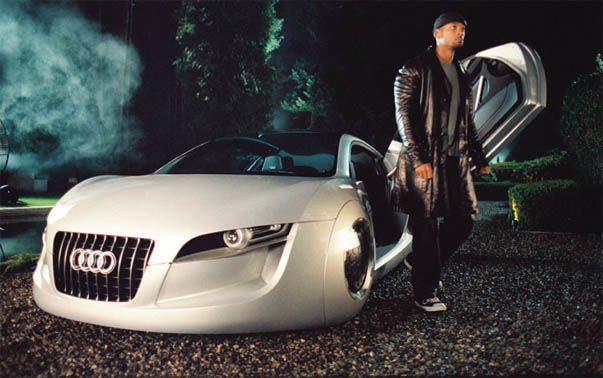
In 2003, Lexus is sponsoring Minority Report, in 2004, it’s Audi turn with another film of the same genre.
The Incredibles (2004)

The Barclays bank is called Bradley. Products-like are very frequents in cartoons and animated films as they create a realistic but slightly different vision of the world and create sympathy for the brand.
7. Misusing the product
Unlike the others product placements, these ones are spotting the product’s defaults or deturning it from its original usage, which can be a technique to create sympathy for the product!
A Clockwork Orange (1970)
Alex’s host is one of his former victims. With his bodyguard (who will play Dark Vador a few years later), he insists that Alex drinks his wine. Alex finaly accepts, though the wine’s color leaves him suspicious. This wine, supposed to be a 1960 Château Saint Estèphe Medoc, contains a powerful sleeping pill.
White Men Can’t Jump (1992)

According to Wesley Snipes, the blond guy can’t jump because there isn’t enough air in his Nike shoes…
Fight Club (1999)
In this scene, Tyler and the narrator are vandalizing a BMW and a New Beetle, but sparing a Hyundai.
According to Edward Norton: “The Beetle was a hippie symbol in the 60’s, but this generation has sold its values to lead the advertising; they have rebranded their revolution’s symbol to sell it 30 years later, thus explaining the 2 characters’s reaction…”
Other misusing in Fight Club:
The two characters are criticizing a Gucci ad and the men that “tries to look like what Calvin klein or Tommy Hilfiger said they should”
The narrator fills his empty life with IKEA furnitures. This sequence immerses us in an interactive IKEA catalogue.
Idiocracy (2006)
In the year 2500, Starbucks is an”exotic coffee for men”!
Despicable Me (2010)
A product placement that we can call posthume, that will make the parents laugh! Lehman Brothers was one of the main banks responsibles for the subprimes crises and went bankrupt in 2008.
8. When product placements parody product placements
In this last category, examples are few. Most of these product placements are in ironic comedies. The advertising is so obvious that it becomes comic.It is flattering the public’s ego by showing him that he is able to understand the background of a product placement, which is from a marketing’s standpoint a wonderful technique for brands to create sympathy.
Return of the Killer Tomatoes (1988)
Tribute to B-movies, this film is pretty bad, but worth it for this parody scene with young Georges Clooney.
Wayne’s World (1992)
Wayne Campbell and Garth Algar host a broadcast from their parent’s basement. Benjamin Kane, local TV producer, randomly finds them and decides to hire them. In this scene, Mike Myers does absolutely the opposit of what he says.
Last Action Hero (1993)
Arnold Schwarzenegger spoofing Arnold Schwarzenegger and the way he always brings his Planet Hollywood into the discussion, ingenious way to promote Planet Hollywood…
The Truman Show (1998)
The only non-comedy of this category. Truman is the involuntary hero of a TV show since his birth. All his friends and family are in fact actors, who tend to promote a sponsor from time to time, which makes Truman suspicious.
The Simpsons movie (2008)
Ad banners are frequent in the US. TV Channels are using this process to promote their shows. The Simpsons often mocked the Fox, their TV broadcaster. This banner ends with an ironically fun “That’s right, we even advertise shows during movies now”. To which Matt Groening wanted to add “What are you going to do? Change channel?”
9. Bonus sequences
Because all the product placements can’t fit in 8 categories…
Super Cash Me : the movie that tells the truth

Morgan Spurlock reveals Hollywood’s little dirty secrets and the ploys used by advertisers to place their products on movies or TV
The crossed promotion between 2 movies
A Clockwork Orange (1970)

Alex is a big Beethoven fan. He meets 2 girls at the record store. The 1st record at the right of the character is the original track of 2001 A Space Odyssey, released 2 years before and realised by the very same Stanley Kubrick, who was right to think that this movie would become a classic in a not so far future. On another subject, it is interesting to see how people imagined the future in the 60’s.
Raiders of the Lost Ark (1981)
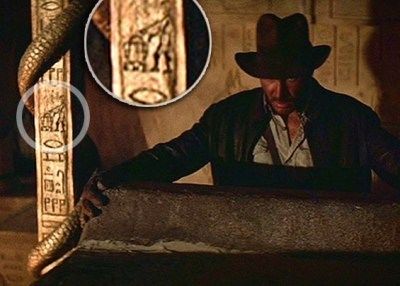
What are R2D2 and C3PO doing here?
Die Hard II (1990)
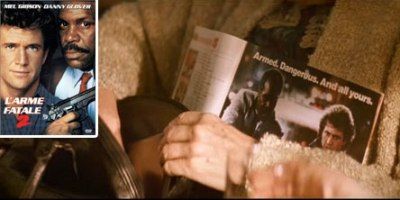
At the beginning of the movie, John McClane’s seatmate is holding a newspaper where we clearly see an ad for Lethal Weapon 2, released a year before.
Sleepy Hollow (1999)

A new autopromotion phenomenon! See how the scarecrow looks like Jack, from The Nightmare Before Christmas, also realised by Tim Burton.
Monsters, Inc. (2001)
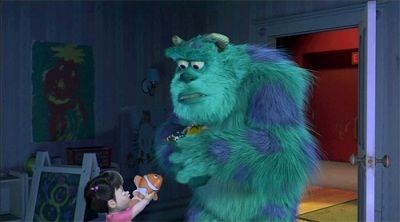
The toy the little girl is giving to the monster is… Nemo, whose movie wasn’t released yet, also produced by Pixar!
HAL9000: The hidden IBM product placement in 2001, A Space Odyssey (1968)
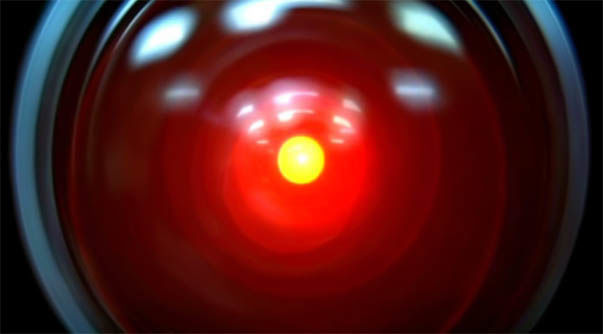
HAL is the Discovery Spaceship’s smart computer. HAL stands for Heuristically programmed ALgorithmic Computer. Neverless, by shifting by 1 letter, we get IBM. Stanley Kubrick however declared that it was not on purpose…
Borat (2006) – misusing an entire country!
Borat is proud of his country: Kazakhstan. Although the country strongly denounced the distortions of the movie, Borat contributed to increase turism in Kazakhstan!
A remarquable lack of product placements: Dawn of the dead (1978)

In this famous zombie movie, most of the time is spend in a mall. There is absolutely zero recognizable brand or shop, which makes this temple of consumption quite unreal!

Even the car is not branded!
Luc Besson and Audi
The transporteur (2002)

Go Fast (2007)
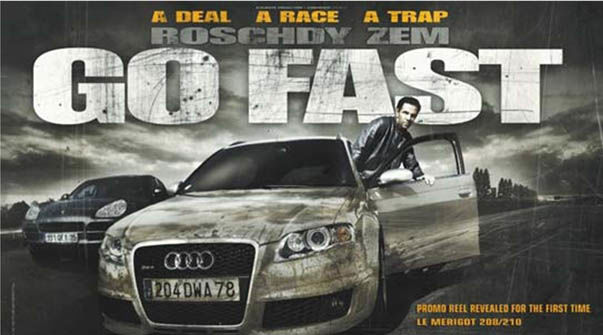
Hitman (2007)

Taken (2008)

The Converse saga
If the famous shoe continues to be sold like hot cakes despite the lack of confort, it’s maybe because of all these movies that influence our subconscious.
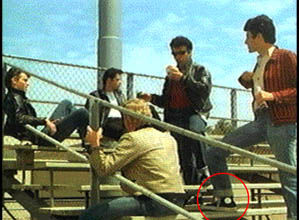

Grease (1976) Rocky (1976)
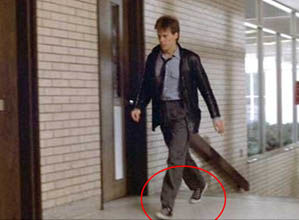

Footloose (1984) Back to the Future (1985)
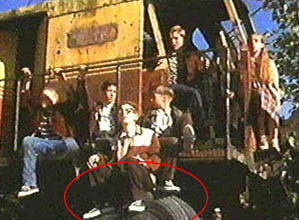
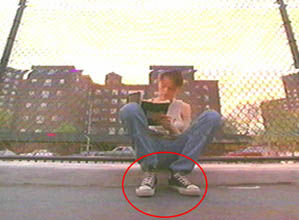
It (1990) Basketball diaries (1995)
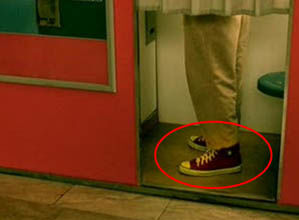

Le fabuleux destin d’Amélie Poulain (2000) Fast and furious (2001)
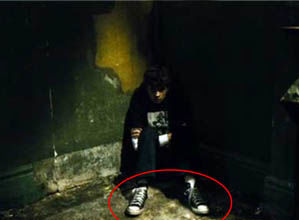

Saw 2 (2005) Sin City (2005)
Marie-Antoinette (2005)
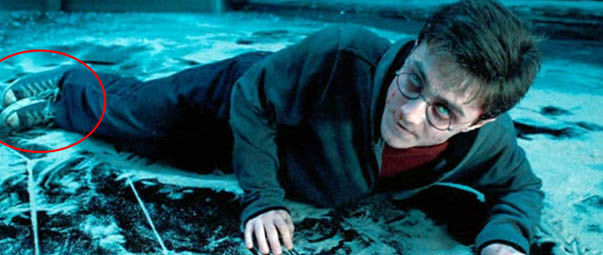
Harry Potter and the Order of the Phoenix (2007)
The best for the end: I, robot (2004)
Fast food chains product placements
Coming to America (1988)

The prince, played by Eddy Murphy, arrives in the US and works at McDowell’s…
Pulp Fiction (1994)
Quentin Tarantino likes long sequences with banal discussions between characters. In this scene, Samuel L. Jackson and John Travolta are wondering why the Quarter pounder with Cheese is called Royal Cheese in France.
In this dramatically intense scene, Samuel L. Jackson is curious about his future victim’s Big Kahuna Burger. Too bad it’s a fictive chain!
The Fifth Element (1996)
A futuristic product placement for MacDonald’s, that takes part in the movie for 2 minutes!
Ed TV (1999)

How many KFC products do you see? The correct answer is 6!
American Beauty (2000)

Mr. Smiley’s is an imaginary fast food. It is interesting to note that no fast food chains wanted to partner with the movie. Maybe because the hero says he wants with the a job “with the least amount of responsibility”. This fake fast food fits with the hero’s frame of mind: he just saw his wife with her lover, but couldn’t care less since he disconnected from his previous life to enjoy every single moment he lives.
Goodbye Lenin (2002)

Goodbye Lenin is one of the rare german movies that encountered an international success. A young Berliner has to hide the fall of the Berlin Wall to his sick mother to preserve her health. Ariane, his sister, gave up on studies to work on “the free flow of goods”… as a server at Burger King that just opened!
The Terminal (2004)
Tom Hanks again! In this comedy, Tom Hanks is a turist from a small fictionnal European country, blocked in an American airport because of a military coup in his country. The only way he can get low cost food is by eating at the airport’s Burger King.
Harold & Kumar go to White-Castle (2004)
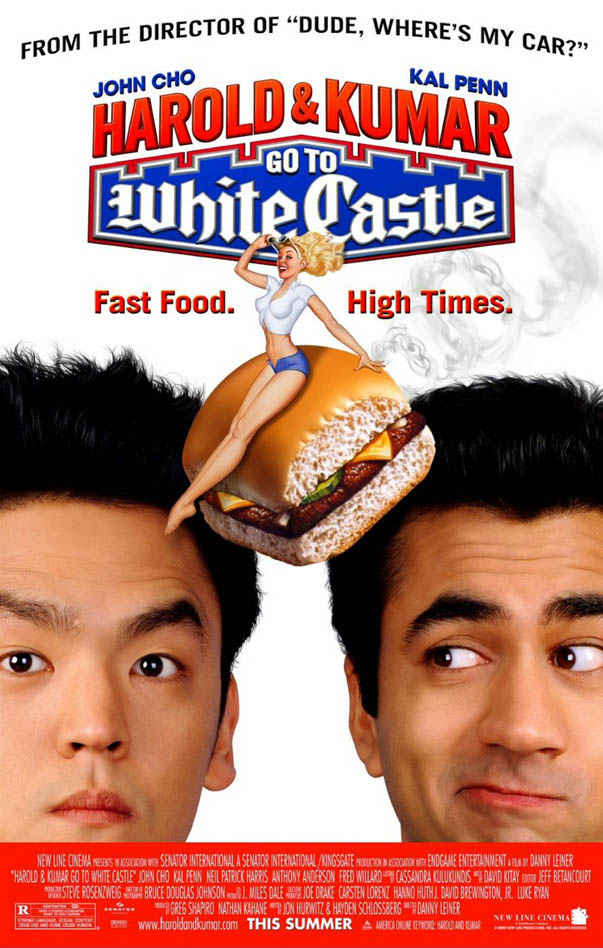
Harold et Kumar are hungry and decide to go to the White-Castle. But White-Castle is rare and hard to find, thus goes the movie’s plot! This movie contributed to increase the chain’s notoriety, who opened more restaurants after the movie.
This typical US marketing war also uses movies as a battelfield. Each of the giants has his territory…
| The Coca-Cola territory |
It’s a wonderful life (1946)A vintage product placement in an also vintage movie! Dr Strangelove (1963)Can Coca-Cola save the World? The Birds (1963)The Exorcist (1973)Superman 2 (1980)Superman’s colors are closer to Pepsi, but he is throwing his ennemy into a giant Coca-Cola ad. Last Action Hero (1993)So obvious in an action movie parody to have a Coca-Cola product placement as big as a truck! |
| The Pepsi territory |
Mean Streets (1976)Back to the future (1985)
Fight Club (1999) |
The difficult cohabitation between Coke and Pepsi
Hard job to find a movie where both giants are present. Please leave a comment if you know others.
Grease (1976)
What’s the point of this Pepsi billboard during the credits?

What is this blurry picture at the Frosty Palace? Oh yes, a Coca-Cola ad!

Coke is blurry but Pepsi (at the left) is not…
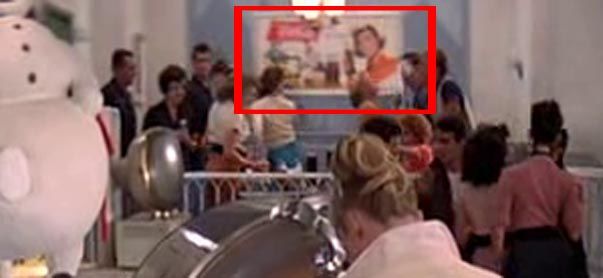
Well, this one for Coke looks clear.

This one is also clear.
How to explain this selective blurring?
My hypothesis: the producer must have had an agreement with Coca-Cola that fell through because of the other agreement with Pepsi! The most obvious Coca-Cola ads were blurred.
Goodbye Lenin (2002)
No blurring on both! It must be easier for a non-american movie. Neverless, Coke is clearly above Pepsi as it plays an active role in the scenario.
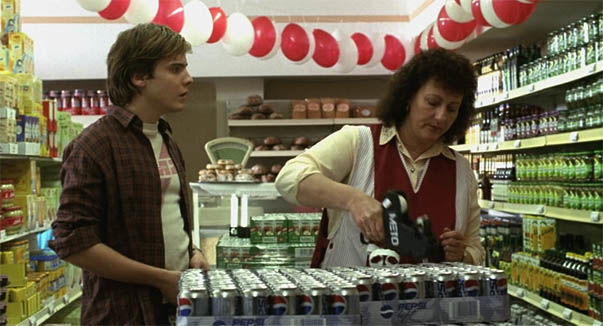
Finally…
12 commentaires (+ajouter le votre ?)
Laisser un commentaire

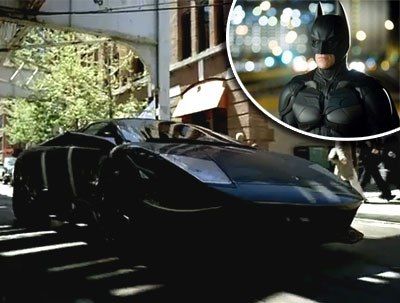
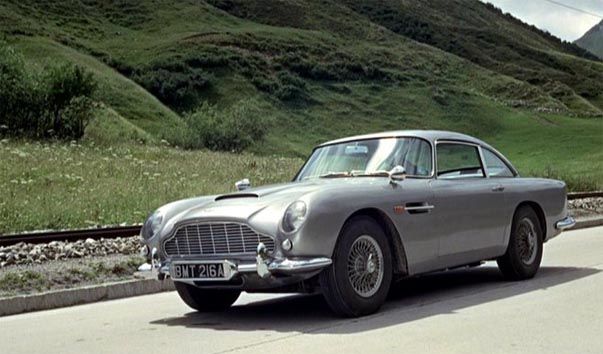
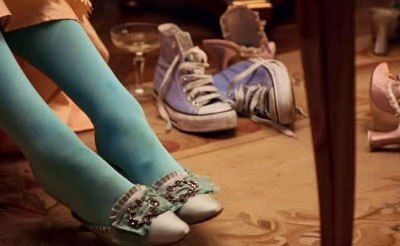

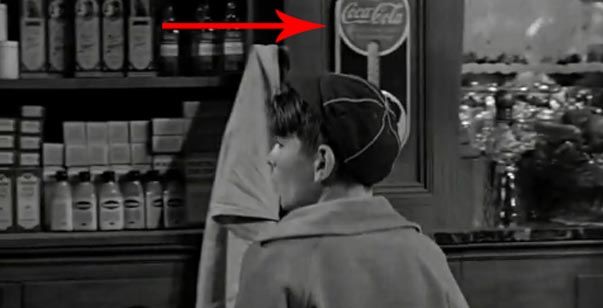





FastJesus - 20 Sep 2017 à 14:51:55
I see you don’t monetize your blog, don’t waste your traffic,
you can earn additional cash every month because you’ve got high quality content.
If you want to know how to make extra money, search
for: best adsense alternative Dracko’s tricks
Product Placement - 10 Dec 2017 à 06:30:09
Very nice! Biggest article on the web about about product placement 😉
Robert Clark - 03 Jan 2019 à 20:48:04
In Cobra (1986) you see both Pepsi and Coke ads
scotty - 22 May 2019 à 19:59:38
main Character drinks Coca cola, but there are lots of subliminal pepsi references throughout the film…
scotty - 22 May 2019 à 20:06:59
oops forgot to mention the film ” Jurassic World” both Pepsi and Coke
Anja - 28 Feb 2022 à 16:39:09
Hello, I would like to write a school paper on this topic, and I am wondering what is the best way to mention/credit your work? Thank you.